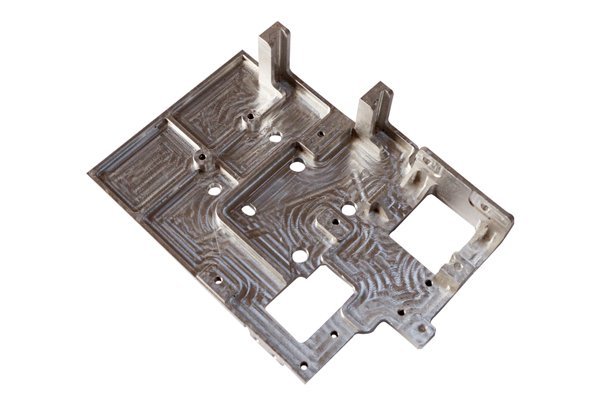Did you know that aluminum is one of the most recycled materials in the world, with about 75% of the aluminum ever produced still in use today? This incredible statistic serves as a reminder of aluminum’s versatility and importance in various industries, particularly in manufacturing. In recent years, computer numerical control (CNC) machining has gained significant traction for the production of custom aluminum alloy parts, revolutionizing manufacturing processes and opening up opportunities for precision and efficiency like never before.
In this comprehensive guide, we will delve deep into the benefits of CNC machining for custom aluminum alloy parts, addressing why it is the preferred choice for many manufacturers. We’ll examine how this technology works, the advantages it offers, the challenges it addresses, and the diverse applications of CNC machined aluminum parts. Whether you’re new to CNC machining or considering implementing it in your production process, this blog will equip you with valuable insights that can help improve your operations.
What is CNC Machining?
CNC machining is a manufacturing process that utilizes computer-controlled machinery to create precise and complex parts from various materials, including metals, plastics, and composites. The process involves using a computer-aided design (CAD) program to generate a design blueprint that feeds into a CNC machine, which then performs various operations such as milling, turning, grinding, and drilling.
CNC machining is particularly popular for producing custom parts because of its ability to achieve high precision, reduce errors, and enhance production speed. Aluminum alloy parts, in particular, can benefit greatly from CNC machining due to the favorable properties of aluminum, such as its lightweight, corrosion resistance, and excellent thermal conductivity.
Key Features of CNC Machining
Why Choose CNC Machining for Custom Aluminum Alloy Parts?
One of the foremost advantages of CNC machining is its high level of precision and accuracy. CNC machines operate using advanced algorithms that dictate every movement of the cutting tools, allowing manufacturers to achieve tolerances as tight as ±0.01 mm. For custom aluminum alloy parts with complex geometries, this level of accuracy is essential to ensure seamless integration with other components and to meet stringent quality standards.
CNC machining significantly reduces the time required to produce custom aluminum parts. Traditional machining methods often involve lengthy setups and considerable manual labor, which can lead to increased lead times. Conversely, once a CNC machine is programmed for a particular design, it can produce parts rapidly with minimal human intervention, maximizing productivity and reducing time-to-market.
While the initial capital investment for CNC machines can be high, their long-term benefits often far outweigh the costs. Reduced labor requirements, faster production times, and lower material waste contribute to overall cost savings for manufacturers. For custom aluminum alloy parts that require intricate designs, CNC machining can also minimize the amount of scrap material generated during production, further enhancing cost-effectiveness.
CNC machining allows for a wide range of customization options for aluminum alloy parts. Manufacturers can easily modify designs in the CAD software to accommodate specific requirements, leading to versatile production capabilities. Whether it’s creating one-off prototypes or large production runs, CNC machining provides the flexibility needed to meet diverse demands.
As production needs change over time, CNC machining can scale accordingly without impacting quality or precision. It is easy to adjust production volumes up or down based on customer demand, offering businesses the agility to respond to market changes more effectively.
Aluminum alloys are chosen for their strength-to-weight ratio, but CNC machining maximizes their potential by minimizing waste through precise cutting and shaping. This material efficiency translates to both operational savings and environmental benefits, as less scrap material means reduced waste and more sustainable practices.
Understanding Aluminum Alloys
Aluminum alloys are categorized into two major groups: wrought and cast. Wrought aluminum alloys are formed through mechanical processes and are typically stronger than cast aluminum alloys. For CNC machining, the most common alloys used include:
Understanding these alloys and their properties is crucial for selecting the right material for your custom parts.
Applications of CNC Machined Custom Aluminum Alloy Parts
CNC machining for custom aluminum alloy parts has a wide array of applications across different industries, including:
In the aerospace industry, weight reduction is a critical factor. Aluminum alloys are favored for aircraft components due to their lightweight properties and high strength. CNC machining enables the production of complex parts such as brackets, fuselage sections, and landing gear components that meet stringent safety and performance standards.
CNC-machined aluminum parts are highly utilized in the automotive sector for their durability and weight-saving capabilities. Components such as engine blocks, chassis parts, and transmission cases benefit from the precision of CNC machining, ensuring reliable and efficient vehicle performance.

The medical industry requires high-precision components for devices such as surgical instruments, implants, and diagnostic equipment. CNC machining can produce intricate parts to meet strict hygiene and safety criteria, making it an ideal choice for medical applications.
Custom aluminum housing and enclosures for electronic devices demand precision and attention to detail. CNC machining allows manufacturers to create complex designs that accommodate various electronic components while maintaining aesthetics and functionality.
From custom jewelry to high-end furniture fixtures, CNC machining offers designers the ability to produce unique consumer products with artistic elements. The versatility of CNC-equipped machinery caters to a wide range of design requirements, making it a popular choice for manufacturers in this sector.
In industrial sectors, CNC machining enables the fabrication of custom parts for machinery and equipment, enhancing performance and reliability. Components such as gears, bearings, and valve housings can be produced with a level of precision that ensures optimal functionality.
Challenges in CNC Machining of Custom Aluminum Alloy Parts
While CNC machining offers numerous advantages, there are also challenges that manufacturers may encounter, including:
Aluminum alloys can cause tool wear and tear over time, especially when machining harder alloys like
Achieving the desired surface finish can be challenging with certain alloys. Manufacturers may need to undertake secondary processes like polishing or anodizing to meet aesthetic or functional requirements.
Aluminum alloys have different thermal expansion rates, which can affect machining tolerances. Proper planning and machining strategies are necessary to accommodate these changes.
While aluminum alloys provide excellent benefits, fluctuating material costs can impact budgeting and production plans. Manufacturers need to account for these changes to stay competitive in the market.
Best Practices for CNC Machining Custom Aluminum Alloy Parts
To harness the full potential of CNC machining for custom aluminum alloy parts, manufacturers should adhere to the following best practices:
Quality CNC machines and tools are essential for achieving desired tolerances and surface finishes. Investing in advanced technology pays off in the long run through increased efficiency and reduced rework.
Select appropriate cutting tools tailored to the specific aluminum alloy being machined. Utilize tooling strategies that minimize tool wear and promote efficient cutting, such as using the right speeds and feeds and employing coolant where necessary.
Regular inspections and quality checks throughout the machining process help maintain dimensional accuracy and surface finish standards. Utilizing advanced measuring tools and techniques such as CMM (coordinate measuring machine) can enhance quality assurance.
Ensure that operators and machinists receive ongoing training in CNC technology and techniques. Keeping up with advancements in CNC machining helps optimize processes and improve output quality.
Engage in open communication with design engineers to explore feasible designs early in the process. Collaboration fosters innovation and can lead to improved designs and production efficiency.
Implement lean manufacturing principles to identify and eliminate waste in the CNC machining process. Streamlining operations not only enhances efficiency but also contributes to overall cost savings.
CNC machining has revolutionized the production of custom aluminum alloy parts, offering manufacturers unparalleled precision, efficiency, and flexibility. From aerospace and automotive to medical devices and consumer products, the applications for CNC machined aluminum components are vast and varied. By understanding the benefits, challenges, and best practices associated with CNC machining, businesses can leverage this technology to enhance their operations and ensure they meet the evolving demands of the market.
As the manufacturing landscape continues to evolve, incorporating CNC machining into your production processes will not only optimize your operations but position your brand as a leader in quality and innovation. By investing in CNC technology, you are not just adopting a manufacturing method; you are embracing a future where precision meets creativity and efficiency drives success.
Ultimately, the decision to use CNC machining for custom aluminum alloy parts can propel your business toward achieving its goals—saving costs, enhancing product quality, and responding swiftly to customer demands. The insights provided in this blog are essential considerations that should prompt contemplation and strategic planning as you explore CNC machining opportunities in your industry.






